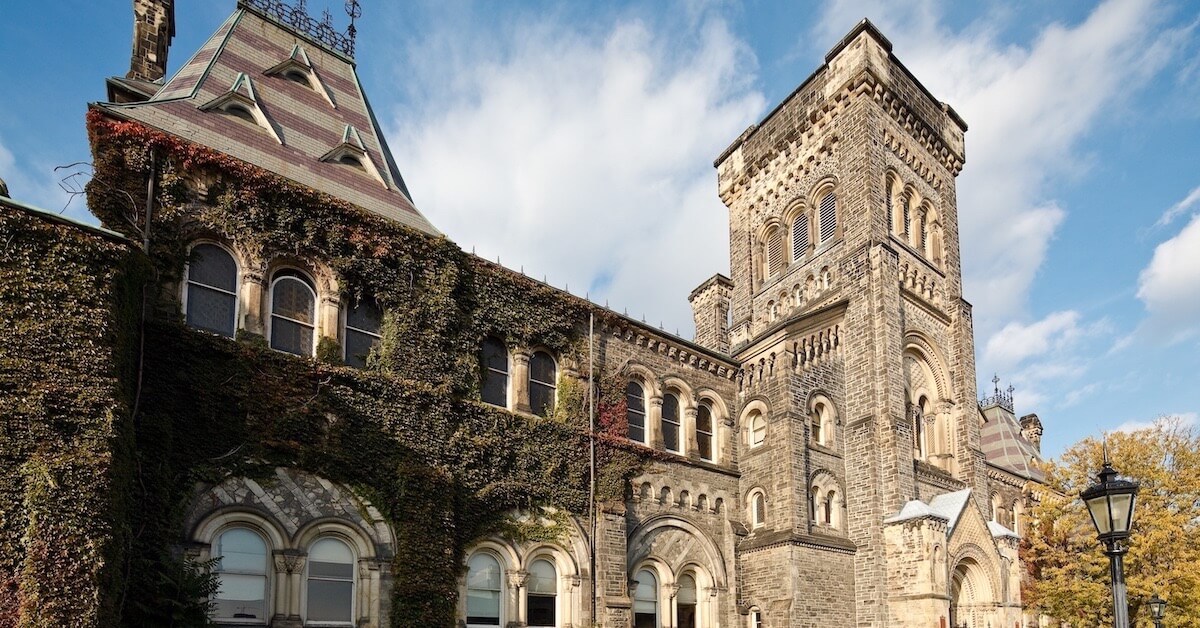How to Apply for University in Canada


Contents
Subscribe to our newsletter!
Join 10,000 other counsellors & educators & get exclusive resources delivered straight to your inbox.
Many students want to learn more about how to apply for university in Canada. It’s unsurprising: as one of largest countries in the world, Canada has a varied and complex university application system.
Whilst the process of applying for university in Canada is not quite as hard to get your head around as its neighbour the USA, there are ten different provinces for students to navigate. Each province and each university will have subtly different admission requirements.
But we’ll let you in on a secret.
Once you understand how the Canadian university system works, it becomes much easier to strategise an application.
To help your Y12/G11/IBDP students who may be wondering about how to apply for university in Canada, it’s helpful to structure their research with three questions:
We can’t take you through the individual entry requirements of every Canadian university here. But we can give you a general breakdown of the different types of Canadian university, the various Canadian degree paths and the entry requirements for different provinces and institutions.
By the end of this article, you’ll be an expert on how to apply for university in Canada!
Most universities in Canada are publicly funded through the provincial governments of Canada. However, there are also a number of private institutions and liberal arts colleges. It’s also worth noting that Canada has a host of vocational institutions – for example colleges and polytechnics
These institutions receive funding from the provincial, territorial and/or federal government, although they do charge students tuition fees as well as accept private funding.
The University of Alberta, Simon Fraser University, Universite de Moncton.
A private university generally does not receive funding from the provincial, territorial or federal governments, instead receiving private funding through donations from wealthy alumni and faculty research grants as well as traditional tuition fees.
Private universities often attract and retain the very best staff possessing esteemed reputations in their respective fields.
University Canada West, Crandall University
Similar to their US counterparts, liberal arts colleges place a particular emphasis on undergraduate courses in the liberal arts, namely the humanities but also social, natural and formal sciences. Many liberal arts institutions in Canada also fall into the category of private universities.
St Francis Xavier University, Crandall University, Mount Allison University.
These are Canadian institutions offering a range of technical diplomas and applied degrees. It’s also worth noting that some Canadian universities also offer some shorter diplomas and career-based programmes.
Saskatchewan Institute of Applied Sciences and Technology, New Brunswick College of Craft and Design
Canada sits in what could be called a ‘sweet spot’ between the US system and the UK system of higher education. This means that, like the British system, applicants apply to a course of study, but they have flexibility to make their own path to the degree.
Students can expect to take around 5 courses per semester; it is these classes which make up the degree programme. Typically, each course is made up weekly of two hours of lectures and a one hour tutorial where a teaching assistant leads a discussion based around that lecture or the week’s reading.
Applied Degree programs in Canada combine the academic focus of a university degree with the practical, job-ready skills students learn in college. A number of colleges and technical institutes across Canada, as well as some universities and university colleges, have introduced Applied Degree programs to respond to today’s demanding job market.
Applied Degrees fill the need for educated and highly-skilled workers by producing graduates who bring a strong combination of technical and theoretical skills to the job.
There are some differences between how the education system is structured in Quebec compared to the rest of Canada, as well as the language or terminology used. In Quebec, ‘college’ (or ‘CEGEP’) refers to either a 2-year pre-university programme or a 3-year professional programme.
These could be thought of as equivalent to a British ‘sixth form’, and are required to progress to traditional undergraduate study at a university. This is typically 3 years long and results in a bachelor’s degree.
Everywhere else in Canada, ‘college’ refers to a community college or a technical school where students can earn a certificate, diploma or associate’s degree.
The Canadian admissions process is a lot less complex and time-consuming than the US admissions process. But it’s important for applicants not to develop a false sense of security!
Starting the process early can also increase the chance of your students being admitted. Here are the first steps to bear in mind as you guide students on how to apply for university in Canada.
In Canada, students apply to courses/programmes, not just universities. If you’re familiar with the US admissions process, this may surprise you.
It doesn’t mean that students are locked into one series of modules for their whole university life – there’s lots of choice within the programmes. However, they do need to apply to a programme of study (such as Actuarial Science, English or Biology).
Having found the right course, it’s necessary to look at the deadlines and requirements because they can vary from province to province, as well as from university to university! If you have students asking when and how to apply for university in Canada, you’ll have to be clear that there isn’t one single timeline across the country.
Generally speaking, the Canadian university application process starts in the fall (autumn) of the year before the degree course commences. Be sure students start looking into scholarships right away too, as some have early deadlines.
Just to make the question of how to apply for university in Canada a bit more complicated, application deadlines vary by programme of study, as well as by university and province. They also can change annually, so the best advice we can give is for both counsellors and students to check, check and triple check before the application process begins!
Most undergraduate programs in Canada accept applications until 1st of March for September entry. However, there are exceptions. For the fall term (September) entry, deadlines can be as early as 1st November the previous year.
Students are strongly encouraged to submit their applications far in advance of the posted deadlines. Spaces fill quickly for popular universities and programs, and it is common for a programme to close before the application deadlines listed.
Again, the documents required for entry to a Canadian university depend on what region/province the university is in. The academic requirements for international students also vary depending on which course/degree the student is applying for.
Canadian universities will generally require strong academic grades in either a national or international high school qualification. In some cases, high grades in a qualification such as the IB can actually count towards university grades.
Students can either submit their achieved grades or their predicted grades. Student of the IB and English national curricula will need to submit their final grades in the summer after their IB/A-level exams.
Canadian universities don’t tend to rely on standardised tests like universities in the US do. However, some universities in Canada will have them as a requirement – for example, the University of Toronto.
Canadian universities don’t tend to rely on standardised tests like universities in the US do. However, some universities in Canada will have them as a requirement – for example, the University of Toronto.
Many colleges require a statement of purpose. This is important not only in the process of evaluating a student’s application, but also for financial aid because it gives the faculty assessing the application their most significant impression of the student as an individual.
This section is the key to distinguish your students’ applications from other suitable candidates – to help them stand out from the crowd.
A statement of purpose should include: a student’s reasons for choosing a particular course; the suitability of their education and experience for the chosen course; and their personal interests and career goals.
Some courses like Business school courses will have their own essay questions and format. Others may ask for a résumé or reasons for applying to that particular course.
Students applying to university in Canada will be required to gain a study permit to take up their place at a Canadian university. A study permit is often issued to international students alongside their visa.
In order to qualify for the Canadian study permit, students need to provide evidence of a valid passport, an acceptance letter from a designated learning institution (i.e. their university of choice) and proof that they can support themselves whilst studying in Canada.
Some of the Canadian provinces have their own centralised application systems – although it’s still worth checking the entry requirements of each individual institution. We’ll briefly explore each of the application systems in more detail.
This is the system through which students can apply to all universities in the province of Alberta. As you would expect, the website contains lots of helpful resources for international students looking to apply to a university in Alberta.
British Columbia’s application site, EducationPlannerBC, allows students to explore undergraduate, postgraduate and apprenticeship opportunities.
The OUAC processes all undergraduate and professional applications on behalf of Ontario’s universities (except the Royal Military College of Canada). Applicants submit their application to the OUAC, indicating all choices they wish to apply for. The OUAC does not make any admission decisions.
The OUAC forwards undergraduate applications to all requested universities and/or programs. Depending on the applicant’s current situation, either the 101 or 105 online applications are used.
The OUAC also processes applications for professional programmes such as law, medicine, teaching and rehabilitation sciences. Specifically:
If you’re guiding students through the process of researching Canadian universities, we’ve got some final tips for helping them get started.
And don’t forget to keep reading our blog for more tips and resources!
Book a free demo to learn more about how BridgeU can help your students explore a wider range of liberal arts institutions.
